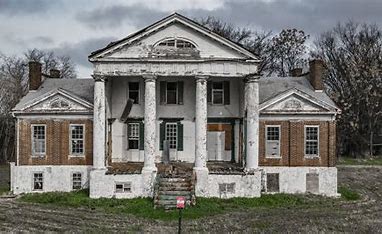Welcome to Valdosta, Georgia, a city where Southern charm meets economic grit, and where the past few years have been anything but predictable. Nestled in Lowndes County, Valdosta’s economy has been a wild ride lately, fueled by job booms, a sizzling housing market, and the relentless fury of hurricanes Idalia (2023) and Helene (2024). If you’re curious about how this vibrant community is holding up, or if you’re considering a move here, buckle up for a deep dive into the numbers, stories, and trends shaping Valdosta’s economic landscape as of April 2025.

Valdosta’s Economic Backbone: Jobs and Growth
Valdosta’s economy is buzzing with energy, and the stats back it up. As of February 2025, the civilian labor force clocks in at around 64,000, with 61,000 employed and an unemployment rate of just 3.9%. That’s a tight labor market, folks, lower than the national average and a sign that jobs are plentiful. Nonfarm employment sits at 57,000, with heavy hitters like trade, transportation, utilities (12,200 jobs), and government (12,600 jobs) keeping the wheels turning.

But here’s where it gets exciting: Valdosta’s been on an economic hot streak. Over the past four years, the city has welcomed nine new industries and 28 expansions, injecting 1,150 jobs and a whopping $742.3 million in capital investment into the local economy. Picture this: a new Walmart milk-producing facility is slated to open later this year, bringing 390 jobs and a $350 million investment. That’s not just jobs, it’s a lifeline for local farmers and a boost to Valdosta’s agricultural roots, from pecans to tobacco
Wages tell a more grounded story. The average hourly wage is $22.42, solid, but 29% below the national average of $31.48. If you’re in legal or management roles, you’re laughing all the way to the bank with $55.49 and $47.21 per hour, respectively. But for folks in food service or personal care? It’s a tougher grind at $12.62 and $13.17 per hour. Still, with retail sales topping $3 billion annually and a workforce of nearly 160,000 within a 45-mile radius, Valdosta’s got the muscle to keep growing.
Housing: A Market on Fire
If you’re house-hunting in Valdosta, bring your A-game, this market is competitive. The median home price hit $234,400 in December 2024, up 6.9% from the year before, with homes selling at $138 per square foot. Redfin pegs the median sale price at $225,000 from August 2024, a jaw-dropping 23.6% jump year-over-year, with properties flying off the market in just 20 days. Renters, meanwhile, are getting a steal: the average rent in November 2024 was $966 a month, 38% below the national average of $1,559.
Why’s the market so hot? Affordability is a big draw. Valdosta’s cost of living is 15% lower than the U.S. average, making it a magnet for families and retirees. But don’t sleep on this trend, rents crept up 3.7% last year, and home prices keep climbing. Whether you’re buying or renting, Valdosta offers bang for your buck, but you’ll need to move fast.
Government Spending: Building the Future

The City of Valdosta isn’t shy about investing in itself. The FY 2024 budget clocks in at $144.3 million, with $135.3 million in expenditures earmarked for capital projects and infrastructure. Think roads, utilities, and public safety, stuff that keeps a city humming. The millage rate for 2024 is 6.506, a slight dip from 6.947 the year prior, keeping property taxes manageable for residents. Dig into the 2023 Comprehensive Annual Financial Report (CAFR), and you’ll see a city committed to balancing growth with fiscal responsibility.
Schools: A Mixed Report Card
For parents, Valdosta’s schools are a tale of highs and lows. Valdosta City Schools serve 8,291 students with a student-teacher ratio of 16:1 and spend $11,329 per kid annually. Test scores? Not stellar, 21% proficient in math, 23% in reading, but there are bright spots. Scintilla Charter Academy boasts a 10/10 rating, and Lowndes High School scores a 9/10. Valdosta High ranks #5,679 nationally, with 22% AP participation and an 87% minority enrollment, reflecting the city’s diversity.
The district’s C- grade signals room for improvement, but the numbers don’t tell the full story. Dedicated teachers and community support are pushing for progress, making Valdosta a place where education is evolving.
Hurricanes Idalia and Helene: Nature’s Economic Wrecking Balls
Now, let’s talk about the elephant in the room, or rather, the hurricanes in the backyard. Since 2023, Valdosta has been slammed by two monsters: Hurricane Idalia and Hurricane Helene. These storms didn’t just rattle windows, they shook the economy to its core.

Hurricane Idalia (August 2023): Picture this, a Category 3 storm roaring in, flooding Valdosta with its wettest day in 23 years. Over 1,000 homes took a beating, with trees crashing through roofs and power outages hitting 97% of Lowndes County. The city hauled away 260,000 cubic yards of debris, think $39 million in cleanup costs, and home repairs likely added another $50 million to the tab. Businesses shut down, power flickered out, and a Business Recovery Center sprang up to help owners get back on their feet. Total estimated damage? Around $89 million, give or take.
Hurricane Helene (September 2024): If Idalia was a punch, Helene was a knockout. With 100+ mph wind gusts, this Category 2 storm (downgraded from Category 4 at landfall) turned downtown Valdosta into a war zone. Historic buildings crumbled, homes lost roofs, and power vanished county-wide. Insurance claims piled up, State Farm alone saw 35,000 across Georgia, with Lowndes County likely chipping in $52.5 million worth. Debris cleanup and repairs could easily match or exceed Idalia’s costs, pushing Helene’s direct hit past $90 million. Businesses like El Paso limped along with generators, and residents faced weeks of recovery.
Combined Impact: Add it up, and these storms have cost Valdosta over $180 million in direct damages. Power outages crippled commerce, temporary job losses stung, and the ripple effects linger. Federal aid, over $210 million for Helene alone, has fueled rebuilding, but the long-term scars are real. Insurance premiums might skyrocket, property values could dip, and tourism may take a hit as Valdosta’s hurricane-prone rep grows. Yet, construction booms from recovery could spark a silver lining, pumping money into local pockets.







Leave a Reply